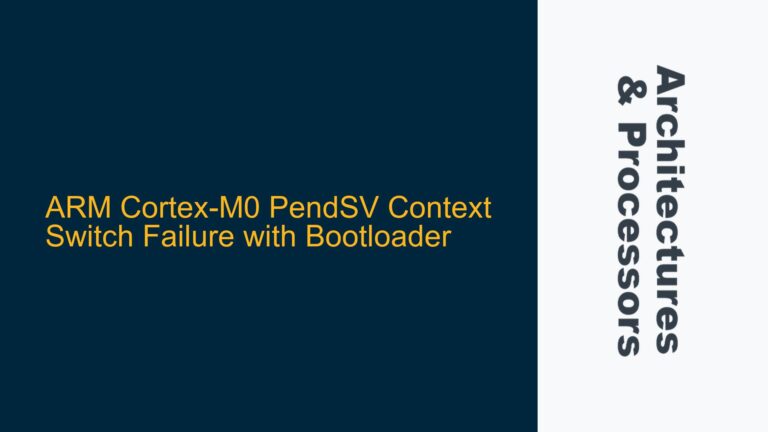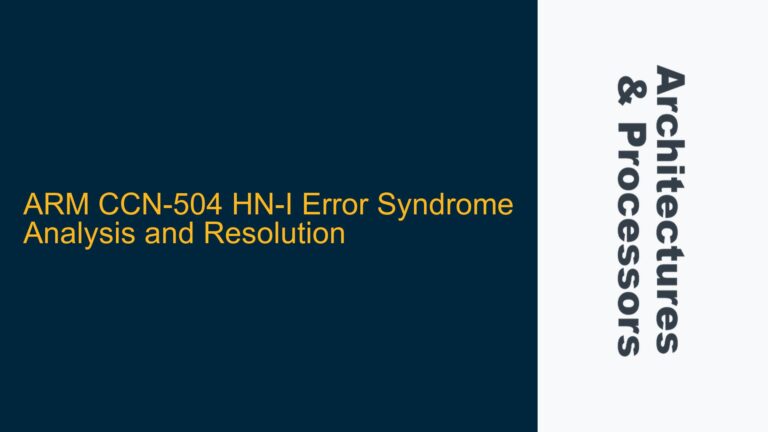AMBA AXI Reset Signal Assertion and De-assertion Requirements
The AMBA AXI protocol specifies a single active LOW reset signal, ARESETn, which plays a critical role in initializing the AXI components within a system-on-chip (SoC). According to the AXI protocol specification (IHI0022D), ARESETn can be asserted asynchronously, meaning it can transition to a LOW state without being synchronized to the rising edge of the global clock (ACLK). This immediate assertion ensures that all registers connected to ARESETn are reset promptly, regardless of the clock state. However, the de-assertion of ARESETn must be synchronous with the rising edge of ACLK. This requirement ensures that all AXI components have a full clock cycle to stabilize their internal states before ARESETn is sampled as HIGH.
The protocol mandates that during the reset phase, all xVALID signals (ARVALID, AWVALID, WVALID for masters and RVALID, BVALID for slaves) must be driven LOW. This ensures that no transfers are initiated or acknowledged during the reset period. The xVALID signals act as gatekeepers for the validity of the associated channel payloads. When xVALID is LOW, the payload signals on the corresponding channel are considered undefined, and their values do not affect the system’s behavior.
The asynchronous assertion and synchronous de-assertion of ARESETn introduce a critical design consideration: the reset controller must ensure that ARESETn is de-asserted in a manner that aligns with the rising edge of ACLK. This synchronization is essential to prevent metastability issues in the AXI components, which could arise if ARESETn transitions near the clock edge. Metastability can lead to unpredictable behavior, including incorrect state initialization or signal glitches, which are particularly problematic in high-performance systems where timing margins are tight.
Potential Issues with Asynchronous Assertion and Synchronous De-assertion
The primary challenge in implementing the AMBA AXI reset mechanism lies in the dual nature of ARESETn: it must be asserted asynchronously but de-asserted synchronously. This requirement can lead to several potential issues if not handled correctly.
First, the asynchronous assertion of ARESETn can cause timing violations if the reset signal is not properly synchronized with the clock domain of the AXI components. While the assertion itself does not require clock synchronization, the subsequent de-assertion must be carefully timed to avoid metastability. If ARESETn is de-asserted too close to the rising edge of ACLK, the AXI components may not have sufficient setup time to stabilize their internal states, leading to incorrect initialization.
Second, the requirement to drive xVALID signals LOW during reset introduces a dependency on the reset state of the AXI interfaces. If the xVALID signals are not driven LOW promptly upon reset assertion, the AXI components may interpret undefined payload signals as valid, leading to unintended transfers. This is particularly critical in systems with multiple masters and slaves, where improper reset handling can cause bus contention or data corruption.
Third, the protocol does not specify the reset values for non-xVALID signals, leaving their initialization to the discretion of the designer. While this flexibility allows for optimization based on specific use cases, it also introduces the risk of inconsistent reset behavior across different AXI components. For example, if one master initializes its AxBURST signal to a reserved value (e.g., 2’b11), it may cause protocol violations when the reset is de-asserted.
Finally, the reset controller must account for the propagation delay of ARESETn across the SoC. In large designs with multiple clock domains, the reset signal may arrive at different AXI components at slightly different times. This skew can lead to race conditions where some components exit reset before others, potentially causing protocol violations or data corruption.
Implementing Robust Reset Synchronization and Signal Initialization
To address the challenges associated with AMBA AXI reset implementation, designers must adopt a systematic approach that ensures proper synchronization and signal initialization. The following steps outline a robust methodology for implementing ARESETn and managing the reset state of AXI components.
Reset Controller Design
The reset controller is responsible for generating ARESETn and ensuring its proper synchronization with ACLK. The controller should include a synchronization circuit that aligns the de-assertion of ARESETn with the rising edge of ACLK. This can be achieved using a two-stage synchronizer, where the asynchronous reset signal is first sampled by the clock and then passed through a series of flip-flops to eliminate metastability.
The reset controller should also include a delay mechanism to ensure that ARESETn remains asserted for a sufficient duration to allow all AXI components to stabilize. This delay should be configurable to accommodate variations in propagation delay across the SoC. Additionally, the controller should monitor the state of ACLK to ensure that ARESETn is de-asserted only when the clock is stable.
Signal Initialization
During reset, all xVALID signals must be driven LOW to ensure that no transfers are initiated or acknowledged. This can be achieved by connecting the xVALID signals to the reset logic, ensuring that they are forced LOW when ARESETn is asserted. The reset logic should also initialize non-xVALID signals to valid values to prevent protocol violations. For example, AxBURST should be initialized to a non-reserved value (e.g., 2’b00 for FIXED bursts), and AxSIZE should be set to a valid transfer size (e.g., 3’b010 for 32-bit transfers).
To ensure consistency across different AXI components, designers should define a set of reset values for all signals and document them in the design specification. This documentation should include the rationale for each reset value, ensuring that the design team adheres to the same initialization strategy.
Verification and Testing
The reset implementation should be thoroughly verified to ensure compliance with the AXI protocol and to identify potential issues. This verification should include both simulation and formal methods.
In simulation, designers should create test cases that cover various reset scenarios, including power-on reset, software-initiated reset, and error recovery. These test cases should verify that ARESETn is asserted and de-asserted correctly, that xVALID signals are driven LOW during reset, and that non-xVALID signals are initialized to valid values. The simulation should also include corner cases, such as reset de-assertion near the clock edge and reset propagation across multiple clock domains.
Formal verification can be used to prove that the reset logic adheres to the AXI protocol and that no protocol violations occur during reset. This method is particularly useful for identifying subtle issues that may not be detected through simulation alone.
Timing Analysis and Optimization
Timing analysis is critical to ensure that the reset implementation meets the design’s performance requirements. Designers should perform static timing analysis (STA) to verify that ARESETn meets setup and hold time requirements at all AXI components. This analysis should include both the assertion and de-assertion of ARESETn, as well as the propagation delay across the SoC.
If timing violations are detected, designers can optimize the reset logic by adjusting the delay mechanism or by adding additional synchronization stages. In some cases, it may be necessary to modify the clock distribution network to reduce skew and ensure that ARESETn arrives at all AXI components within the required timing window.
Power Domain Considerations
In modern SoCs, AXI components may reside in different power domains, each with its own reset and clock signals. This introduces additional complexity, as the reset controller must coordinate the assertion and de-assertion of ARESETn across multiple power domains.
To address this, designers should implement a power-aware reset controller that can handle power domain transitions. This controller should ensure that ARESETn is asserted before power is removed from a domain and de-asserted only after power is restored and the clock is stable. Additionally, the controller should include isolation cells to prevent signal contention during power domain transitions.
Debugging and Diagnostics
Finally, designers should incorporate debugging and diagnostic features into the reset implementation to facilitate troubleshooting. This can include adding status registers that indicate the current state of ARESETn and the xVALID signals, as well as error detection mechanisms that flag protocol violations during reset. These features can be invaluable during system bring-up and debugging, allowing designers to quickly identify and resolve reset-related issues.
In conclusion, implementing a robust AMBA AXI reset mechanism requires careful consideration of synchronization, signal initialization, verification, timing analysis, power domain management, and debugging. By following the steps outlined above, designers can ensure that their AXI-based SoCs operate reliably and efficiently, even in the most demanding applications.






